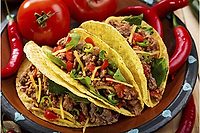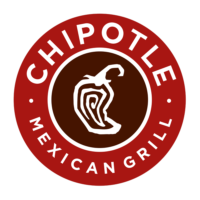Today, Chipotle launched a new marketing campaign aimed at reassuring consumers that their food is safe to eat.
This new promotion comes after Chipotle tried (and still tries) to woo customers to return to stores by offering free burritos, along with introducing a loyalty program that offers free food after repeat visits. Another promotion offered free drinks to high school and college students who purchased a meal.
The campaign boasts the chain’s food safety efforts, which include a lot of changes.
Food labeling
- Bar codes are included on every ingredient shipment so that tracking from farm to restaurant is quick and easy.
- Food storage containers must be labeled with stickers indicating when those foods were sanitized, along with a date for when the food should be thrown out if it is not used.
Food testing
- Suppliers are now testing every ingredient prior to distribution.
Washing, cutting and preparing produce
- High-powered water jets are used to rid chorizo of foodborne pathogens.
- Vegetables are washed both before and after they are chopped and diced.
- Some vegetables are now being chopped in restaurants again, but others are still washed, cut and prepared in centralized kitchens. The use of centralized kitchens is clear to consumers, as some have reportedly complained about the decreased quality of bell peppers and other ingredients.
- Two employees must verify that certain produce items have been immersed in hot water for 5 seconds to kill exterior pathogens.
- Lettuce is rinsed, drained and immersed in a vinegar and water solution, then drained again. It then is chopped, immersed in an antibacterial solution and rinsed again. And if any clear signs of dirt are left in the sink, the chopped lettuce is washed in the solution again.
- Before getting mixed, guacamole ingredients are laid on top of avocados and drizzled with lemon juice, what is believed to be an outdated but still effective pathogen kill step.
Meat preparation
- Steak is prepared “sous vide” style in a plastic, vacuum sealed bag at a low temperature which helps it to cook more evenly and retain moisture.
- Instead of marinating chicken randomly throughout the day, it is now done during the store’s low traffic times to prevent cross-contamination.
Staff training
- Restaurant managers must obtain food safety certification.
- Some kitchens are equipped with automatic timers to notify employees to wash their hands every 30 minutes or so.
- Each day, food safety leaders must ask employees if they feel well enough to work before they clock in.
At the helm of Chipotle’s new and improved food safety efforts are two names well-known in the industry: David Acheson and James Marsden.
Acheson was hired by Chipotle shortly after the new year, charged with overhauling the chain’s entire food safety system. Acheson says that Chipotle is committed to spending whatever it costs to ensure that its food is safe.
“You’re never done with food safety. It’s a constant investment,” he says.
Marsden, a retired Kansas State University professor, joined the Chipotle team earlier this year, charged with figuring how Chipotle could continue to use fresh ingredients while maintaining superior safety at both the supplier and restaurant levels.
“Anybody can spray a bunch of chemicals around and improve food safety,” says Marsden. “This was going to require something more innovative and different.”
With new help on the team, Chipotle’s end goal is, first, to convince consumers that the food they serve is safe, followed by getting those skeptical consumers back inside Chipotle restaurants.
Marsden says that they will “publish papers” at a later date to further explain and prove that the food safety methods being instituted with Chipotle are working.
Sign up for Food Safety Magazine’s bi-weekly emails!




